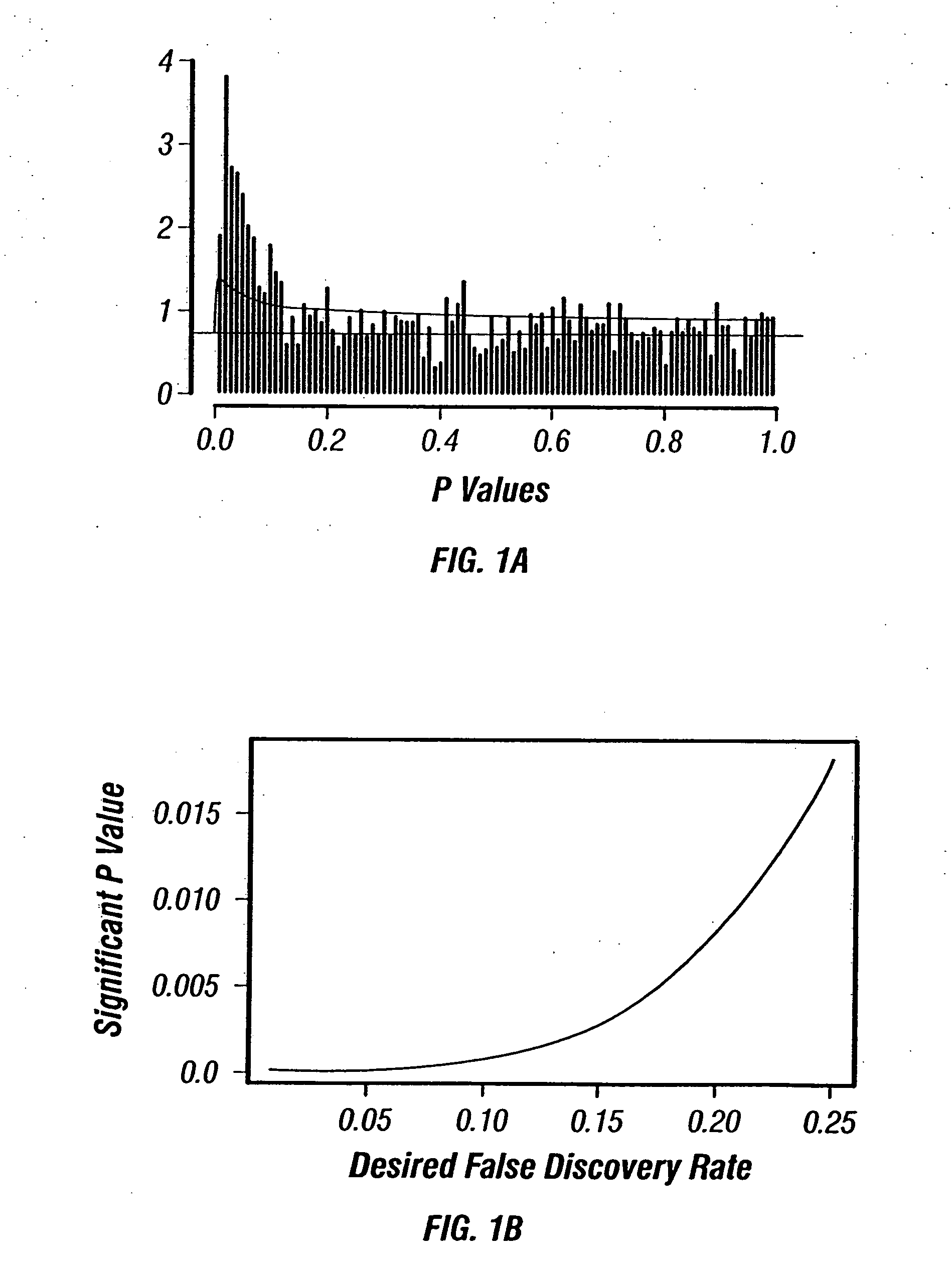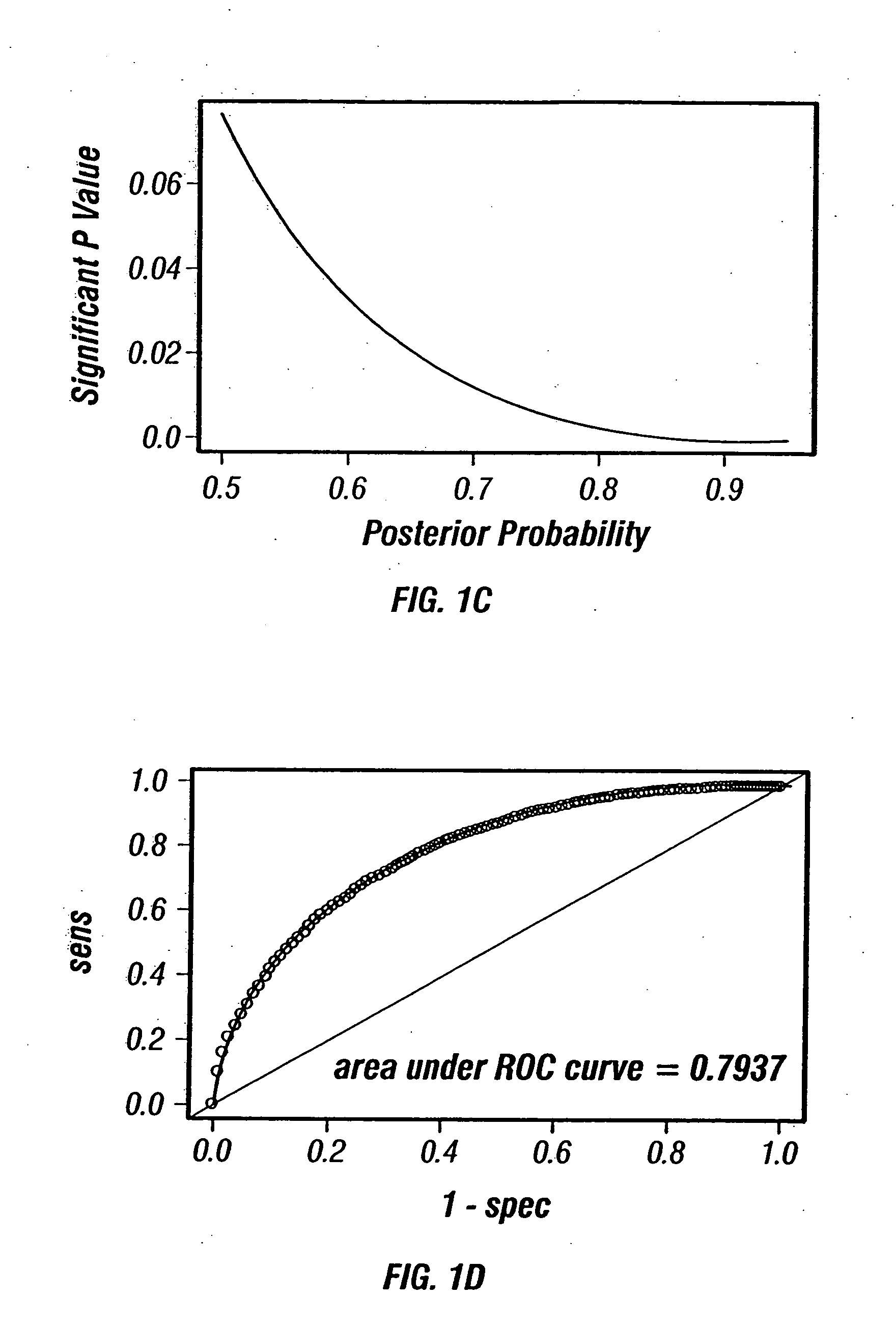Using plasma proteomic pattern for diagnosis, classification, prediction of response to therapy and clinical behavior, stratification of therapy, and monitoring disease in hematologic malignancies
a proteomic pattern and plasma technology, applied in the field of proteomics, can solve the problems of insufficient reliability of current methods for determining diagnosis or clinical behavior of patients with hematologic malignancies, and the inability to accurately predict the response to therapy
- Summary
- Abstract
- Description
- Claims
- Application Information
AI Technical Summary
Benefits of technology
Problems solved by technology
Method used
Image
Examples
example 1
Using Proteomics to Predict Response to Therapy in Patients with Acute Myeloid Leukemia
[0127] In acute myeloid leukemia (AML), response to standard chemotherapy (idarubicin+ara-C) varies significantly between patients and approximately 50% of the patients do not respond to therapy. Although specific cytogenetic abnormalities in AML patients, such as −5, −7 and 11 q abnormalities, or poor performance status and advanced age are known to be associated with poor response to therapy, accurate prediction of response to therapy remains elusive. Accurate prediction of response to therapy in AML may allow stratification of patients and the use of different regimens that might prove to be more effective in these patients when used upfront before compromising the patient's immune system with conventional therapy that will not be adequate to induce remission. Recent advances in genomics and proteomics have provided new hope for finding new molecular markers for the prediction of response to c...
example 2
Using Proteomics to Predict Time From Response to Relapse in Patients with Acute Myeloid Leukemia
[0142] The inventors processed spectra produced from plasma samples collected from 42 and 48 patients with AML. For each patient the inventors have 24 spectra coming from 4 different fractions (Fraction1≡pH9,pH7, Fraction2≡pH5, Fraction3≡pH4, Fraction4≡pH3, organic), 3 surfaces (IMAC3-Cu++, SAX2, WCX2) and duplication of the experiments.
[0143] The first set of spectra (from 42 patients) was produced in the second half of February, 2003. The second set (from 48 subjects) was produced at the end of June, 2003. The following analysis applies to all spectra corresponding to 40 patients from Set 1 and 42 patients from Set 2. The remaining spectra were discarded due to missing clinical information.
[0144] There are 36 patients that responded to the treatment between the two sets (19 from Set 1 and 17 from Set 2). Among them, 17 patients relapsed during the study (5 in Set 1 and 12 in Set 2)....
example 3
Proteomic-Based Prediction of Clinical Behavior in Adult Acute Lymphoblastic Leukemia (ALL)
[0150] Despite the 90% long-term disease free survival that can be achieved in pediatric acute lymphoblastic leukemia (ALL), the long-term survival in adults with ALL remains poor. Only 30% to 40% of adults with ALL can expect a cure. Predicting adult patients who will relapse may help in devising a new therapeutic approach and perhaps allow initiation of therapy at an earlier stage.
[0151] Surface-enhanced laser desorption / ionization (SELDI) and the Ciphergen ProteinChip® system were used to study protein profiles in plasma from untreated patients with ALL to identify biomarkers that predict clinical behavior. Patients were randomly selected at the University of Texas M.D. Anderson Cancer Center among those with a diagnosis of ALL. Diagnosis was based on morphology, cytochemical staining, immunophenotypic analysis (CD34, CD64, CD13, CD33, CD14, CD117, CD10, CD19, CD3, CD20, DR, and TdT), and...
PUM
 Login to View More
Login to View More Abstract
Description
Claims
Application Information
 Login to View More
Login to View More - R&D
- Intellectual Property
- Life Sciences
- Materials
- Tech Scout
- Unparalleled Data Quality
- Higher Quality Content
- 60% Fewer Hallucinations
Browse by: Latest US Patents, China's latest patents, Technical Efficacy Thesaurus, Application Domain, Technology Topic, Popular Technical Reports.
© 2025 PatSnap. All rights reserved.Legal|Privacy policy|Modern Slavery Act Transparency Statement|Sitemap|About US| Contact US: help@patsnap.com



